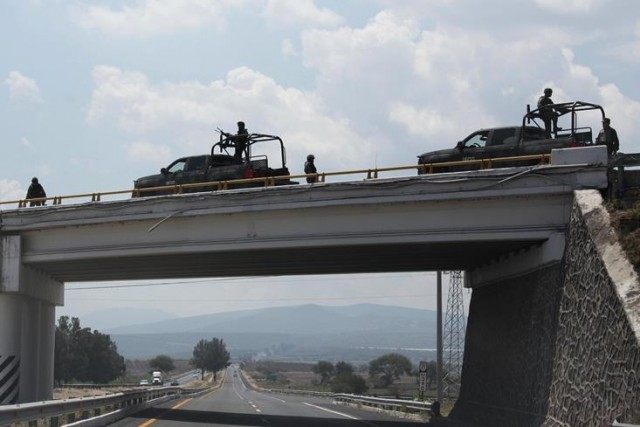Despite Mexico City’s enormous population and opportunities for criminal organizations, it has remained a relative neutral ground for drug cartels. But that image was shattered when drivers discovered a corpse hanging from a Mexico City bridge—a telltale sign that the capital’s peace may be about to shatter.
As a result of the discovery in the Iztapalapa district, the Mexico City government increased security in the border areas of the metropolis and focused on reviewing security camera footage of the area, according to Mexican newspaper El Universal. Mayor Miguel Angel Mancera said, “Although I have avoided commenting on the possibilities of the young man’s death being an action by an organized crime group, I have expressed that the Attorney General will report any progress in the investigation.”
Despite these increased security measures, more corpses appeared in Mexico City alongside threatening messages, according to Time Magazine—another cartel hallmark.
Under public pressure, thousands of police hit the streets, arresting a 600 suspects. Among the suspects, prosecutors announced, was an alleged assassin involved in hanging the body. Evidence gathered, [top prosecutor Rodolfo Rios] said, indicated that the murders are linked to gangs inside Mexico City’s crowded jails.
With a population of almost 9 million people occupying 573 square miles, Mexico City offers cartel leaders and operatives plenty of space to avoid each other while relaxing or conducting administrative business. Since the earlier days of drug trafficking when there was only one major cartel, the capital has always been regarded as neutral ground between crime groups. In recent years, there have been reports of some cartels like La Familia Michoacana, and smaller crime groups like La Mano Con Ojos, engaging in trafficking and violent activity in the outskirts of the city. However, this was never perceived as a large threat to the peace in the capital.
Time explains that the prison populations in Mexico City have skyrocketed in the past few years as a result of drug war-related arrests across the country. Smaller cities and towns have an even bigger overcrowding problem, so prisoners facing federal charges are shipped to Mexico City prisons. Like in any other prison system, gangs form or grow as a means of protection and survival inside the prison walls. Violence inside the prisons is expected, but many gangs have the power to command violence on the outside.
On one side of this battle, prosecutors point to an inmate known as El Avispa, or the Wasp, a 27-year kidnapper called Paulo Sergio Contreras. Another prisoner shot him six times inside the Santa Marta prison in July, but he survived. Messages by the corpses on Mexico City streets have been signed with “Wasp” at the bottom. On the other side, prosecutors point to a prisoner called Luis Eusebio Duque, also known as “Duke.” The Duke was in prison in the capital but was transferred to the border state of Chihuahua, where he may have forged links with the cartel there.
Overall violence has increased in Mexico City. In the first nine months, there were 642 murders inside the Federal District (similar to Washington, DC), a 22 percent increase compared to the same period last year—and the highest number since 1998. However, Mexico City is still safer than many smaller US cities, such as Detroit. Despite the shock to Mexico City residents, it is still too early to say if these corpses are a sign of increased cartel violence in the capital or just a isolated incidents related to prison gang rivalries.
Sylvia Longmire is a border security expert and Contributing Editor for Breitbart Texas. You can read more about cross-border issues in her latest book, Border Insecurity: Why Big Money, Fences, and Drones Aren’t Making Us Safer.

COMMENTS
Please let us know if you're having issues with commenting.